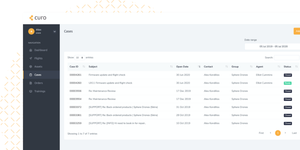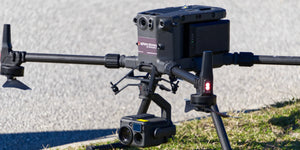DJI is recognised around the world as a leader in consumer, professional and enterprise drones. Their original Mavic Pro took the consumer UAV world by storm for its portability, functionality, imaging and technology features - all wrapped up with a competitive price tag - at least compared to its bigger consumer UAV counterparts.
Now enter the Mavic 2 Pro and Mavic 2 Zoom - the first time DJI has released two separate versions of the same drone model.
A question of imagery
First and foremost - as the flight platform for both is almost identical, let’s look at the imaging technology these two drones carry. It is clear both are punching well-above their comparative weights!
Mavic 2 Pro - imaging
Let’s begin with the news the Mavic Pro 2 is now the world ’s first drone (consumer or otherwise) to have an integrated Hasselblad camera. Housing a 2.5cm, 20-megapixel CMOS sensor with 10-bit colour profile, the camera can capture four times as many levels of colour per channel as the original Mavic Pro - so provides maximum flexibility for photo video editing.
The other noticeable improvement over the original Mavic Pro is D-HDR. This mode allows you to take a burst of seven RAW photos and then combine them to get 14 stops of dynamic range while also reducing motion blur that would typically show up when shooting traditional exposure bracketed shots.
The 2 Pro can also shoot 4K video footage at 100 megabits per second and has 8GB of onboard storage which can be increased with micro USB cards.
Mavic 2 Zoom - imaging
The Mavic 2 Zoom’s camera is powered by a 1/2.3-inch, 12-megapixel CMOS sensor and is DJI’s first consumer drone with zoom, providing a dynamic perspective to your aerial imaging. It allows you to get closer to your subject at a moment’s notice by combining two-times optical zoom (24-48mm) with digital zoom to create a 98mm telephotos lens that captures video in full HD resolution.
Like the 2 Pro, the 2 Zoom can shoot 4K video footage at 100 megabits per second and has 8GB of onboard storage which can be increased with micro USB cards.
In addition, it includes a ‘Super Resolution’ photo mode, where it can stitch nine individual images into a larger 48-megapixel image.
The Mavic 2 - technology
Both drones are sleeker and more aerodynamic than the original Mavic Pro. That said, they both carry the same flight technology and yes it’s official, they are quietest DJI drones on the market.
They carry a top speed of 70 km/h and an astonishing range of 8 km. They are equipped with an amazing 10 sensors for (omni-directional) obstacle avoidance - so a full 360 degrees!
Portable within an inch of their lives, they can be folded to the approx. size of a carry water bottle, so easy to drop in a backpack or day carry bag.
The other good news is the Mavic 2 supports DJI Goggles. It should be noted that DJI Goggles only support a 2.4 GHz frequency band, while DJI Goggles RE support both 2.4 and 5.8 GHz frequency bands for enhanced connectivity.
You can also connect your smartphone to the remote controller (it will fit in the remote controller clamps comfortably), using an ordinary USB cable and connecting to port at the bottom of the controller.
Overall
We just have three words to say: Get one now!
If you are new to drone technology, we highly recommend you speak to a UAV specialist that can advise you drone options to suit your needs.
Sphere Drones is arguably Australia’s leading source of expertise on consumer and commercial drone technology in Australia.
Their Sydney-based operation is a state-of-the-art solutions development facility with some the UAV industry’s leading personnel – making it (or their website) a logical first stop to identify your drone needs.



















